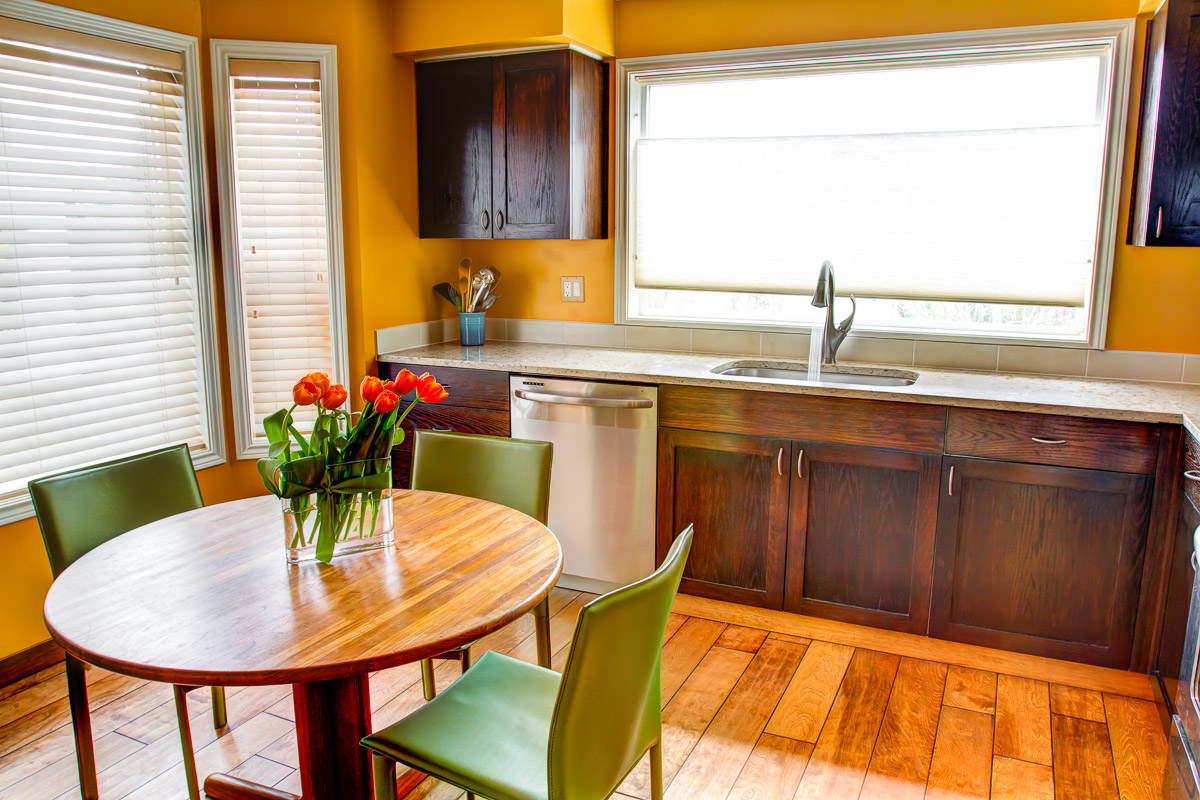The First thing to remember about wood laminate flooring is that it is not made out of wood. I had a lot of trouble with that for a while, because I love wood.
I grow up among trees. From the time I was old enough to hold a hammer and be trusted with a saw, all I wanted to do was to build things. To be perfectly honest, having this old house has nearly cured me of that urge, but only for a while. But all that time working with and around wood has taught me to respect and love the material.
At sometime in the past, all wood was standing in a forest somewhere. Wood is the product of a living, breathing organism. To a certain extent, all wood needs to be treated in a way that remembers and respects that condition. Genuine hardwood floors, even if they are made from trees that have been cut down for more than a hundred years, require a great deal of care to remain looking their best. Even then, they are subject to damage and distress form every day use. The planks of a real hardwood floor even expand and contract to a certain extent in response to changes in the weather.
If a plank of wooden flooring will react like this to atmospheric moisture, it becomes obvious that real wood may not be the best choice for a family’s working kitchen. As tough as a hardwood floor is, there are a number of dangers in the kitchen that could harm it. In addition to moisture, there is the possibility of spills that could stain the wood, or even dropped crockery that could scratch or damage it.
Wood laminate flooring, on the other hand, can be great in the kitchen. That is because even though looks like a piece of highly polished wood, there really isn’t much wood in it. What makes the laminate flooring look so much like wood is actually a photographic appliqué that has been laminated to the plank. This appliqué could be made to look like just about anything, from tile to stone to wood.
The appliqué is placed on a high density fiberboard core. Over the appliqué is a wear resistant, transparent plastic layer. Below the core, a melamine resin is applied for additional structural stability and moisture resistance. Finally a layer of underlayment is used to absorb irregularities of the sub floor, as well absorbing some of the shock of people walking on the floor. The underlayment may or may not be attached to the laminate flooring plank, but it is an important part of the system.
When you are choosing a particular laminate flooring, you will find that there are several brands on the market. Not only are all of the brands not created equal, there are several grades of quality within each brand. Almost as important as selecting a brand is understanding the Laminate Flooring Industries AC ratings. AC is a measurement of Abrasion Resistance. The higher the AC rating, the tougher and more long lasting the laminate.
The highest rating, AC5, is considered resistant enough to be used in all high traffic, commercial applications, including public buildings and store entryways. There is inexpensive AC1 and AC2 flooring on the market, but if it is used at all, we recommend that it only be used in bedrooms and other low traffic areas. AC3 should be more than robust enough for all household uses.
The greatest thing about laminate flooring is its ease of installation. Although the planks at the edge of the room may need to be trimmed to fit, most of the planks simply snap into place without the need for tools.
If you are considering laminate flooring, especially as part of a larger kitchen remodeling job, we hope you will consider calling your friends here at Corvus Construction.

